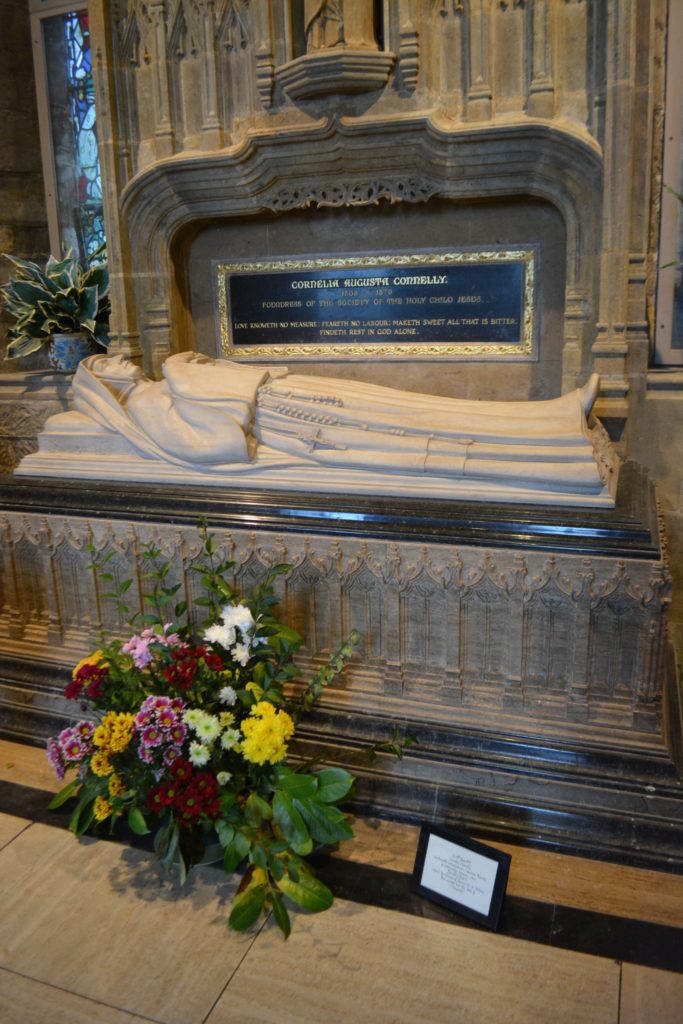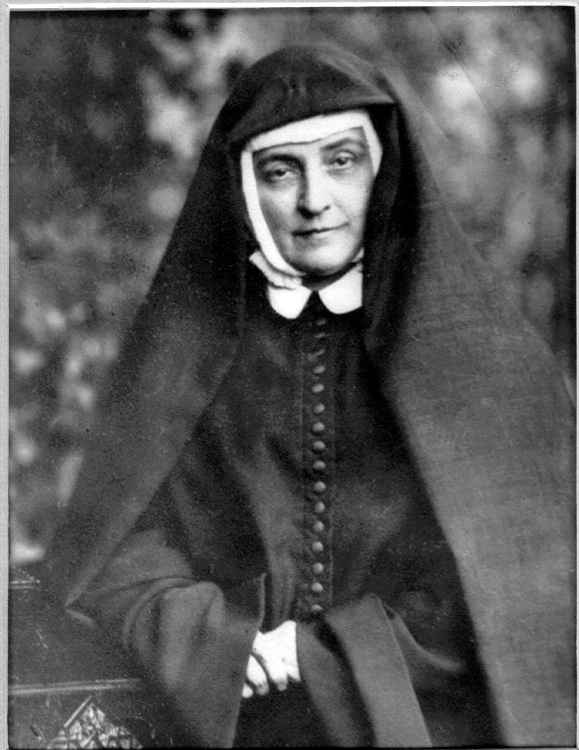18 April 2017
Society of the Holy Child Jesus founder Cornelia Connelly died on this date in 1879.
By Michele Puma, SHCJ
The Readings in today’s Liturgy still focus on Jesus’ Crucifixion and Resurrection, we on the other hand have just experienced the suffering and death of Sister Veronica Grover and we are preparing for her funeral and burial. Our Celebration today of the Anniversary of Cornelia’s death, keeps us focused on the cycle of life, death and Resurrection.
When Joanne asked me to prepare the homily for today’s celebration, I was quite willing to do it for several reasons. Last year, I was one of the two SHCJ’s from the American Province who was selected to participate in the European Province Chapter. My first stop in England was Mayfield which I very much wanted to visit in order to see Cornelia’s tomb. That was the real reason I had asked to go to the European Chapter. I had never been to Mayfield before and my desire to see Cornelia’s tomb was on my “Bucket List”.

It truly was a thrilling experience to see Cornelia’s resting place. It was breathtaking. It really had a significant impact on my relationship with her.
Later, on that same trip, I went to the Archives in London and there among many other artifacts: items which had been on Cornelia’s desk, etc. was a copy of her mortuary card! I was so surprised that she had one!!! I took photos of many of the items which were on display and, of course, I took photos of both sides of the mortuary card.
I wanted to share this treasure with each of you, so I had copies made for you which I will distribute at dinner. The print is not as sharp as it would have been in 1879. However, I think the printer did as good a job as possible after more than 100 years!
But, what about Cornelia’s death? The Anniversary we are celebrating today.
Many of you who live at Holy Child Center have accompanied one or more of our SHCJ on their final journey, so you know it doesn’t happen all at once. I wanted to know more about Cornelia’s last days and her passing. Through the years, I have read and heard about her death but I wanted to review the information.
Fortunately, I had a copy of Juliana Wadham’s book, The Case of Cornelia Connelly. (I know it is old, 1956, and that there are many more recent biographies on Cornelia, but this was on my bookshelf and I thought it could be helpful for my purposes.)
The last chapter in Juliana’s book, is titled, “The End”.
“The three years of extended trial for Danell’s rule were to coincide with the last years of Cornelia’s life, and to leave her on the shores of loneliness isolated by age, disapproval and the deaths of many of her nuns and friends.
In 1877 she was sixty-eight. Many of her contemporaries had already died. ” (p.281)
In June 1874, under Danell’s supervision, the first Chapter was held and Cornelia was elected as Superior General; the same year Cornelia “went to France to relieve the embarrassment her presence in England caused.” (p.285)
At times she asked those who were close to her to pray that her trials would help her to “learn humility.”

It was during these years of physical and psychological pain that she thought her Rule had been rejected. “The gout was beginning to cripple her hands and her feet…but she continued to write letters including recipes.” (p.289) She had frequent bouts of bronchitis and rheumatoid gout.
Her limbs didn’t respond and she found it difficult to get around. Much time was spent in a high wicker chair, what was called a “bath chair”. (p,291)
It was said she made no effort to live; the “nuns waited with quiet and folded hands for her death. Remember she had said, “Doing the will of God is the only happiness and the only thing worth living for.” (p.291) Next she was moved to Mayfield, which she loved because the Novices were there. She played chess with them and the children. But by Christmas, she was back in St. Leonard’s. This would be the “last phase”. (p.292)
By the middle of January, she was seriously ill, and on January 29, the doctor said she was in danger of death. She was again given the Last Sacraments. However, it still was not her time. She recovered: “her mind and her senses recovered, not her body. She was able to get out of bed but only to go to the bath chair and she was not without pain. Days turned into weeks; weeks turned into months.
She continued to take interest in her convents, especially in Neuilly: “it was her last and favorite foundation” (p.293). When one of the Sisters there died, she was concerned for the children, whom she said, “children expect to find mothers in the Sisters, and indeed we cannot expect them to be attached to the place unless they find this motherly care.” (p.293)
She was now nearly 70 years old and in January 1879, she became seriously ill. It had been exactly one year since she had received Extreme Unction. For three months she lay in bed; she also developed a serious case of eczema which spread all over her body and caused continual vomiting.
On April 14 she again was given the Last Sacraments. A few hours later she was unconscious: for 4 days they couldn’t tell is she was dead or alive. On the17th, she called out: “In this flesh, I shall see my God.”
On the 18th the discoloration grew more virulent. At quarter to one she die and the rash faded. “As it went Cornelia’s beauty returned.” (p.295)
Cornelia was certainly, “A Woman of Sorrows”. At every stage of her life, she faced losses: parents, children, family. Everyone she loved was at some point a cause of suffering to her: Pierce, her children, her nuns, the Rule, the Society, the Church.
Jesus must have loved her very much and she returned that love in the fullest measure of which it was humanly possible.


Comments are closed.